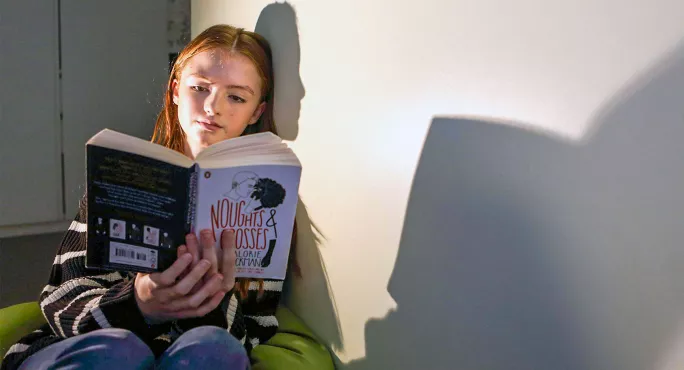- Home
- Teaching & Learning
- Specialist Sector
- How to diversify your English curriculum
How to diversify your English curriculum

One of the many wonderful things about teaching English at an international school is that we are not beholden to the English national curriculum.
However, having taught internationally for more than 20 years, I am always surprised that in most cases, the students at prestigious institutions in Jakarta, Cairo and Manila are getting the same diet of Shakespeare and Dickens that my dad got in England in the 1950s.
There are some compelling reasons to update the literature curriculum, not least on the grounds of representation - after all, few of my students have much in common with Scottish noblemen, depression-era farmers or Victorian street urchins.
Texts featuring characters to whom students can relate will resonate with them more, and it’s particularly important for international schools to include texts from the cultures in which they are situated.
As a perpetually busy teacher, I empathise with how difficult it is to change a curriculum. Developing high-quality materials and assessments for a new text is time-consuming, and it’s unrealistic to change all your texts at the same time.
So here’s how our school in Manila implemented a gradual and systematic English curriculum review.
Finding fresh texts
We started the process by looking at every text we taught from years 7 to 9. We found that of the 11 texts, eight were written by white men, one by a white woman and two by men of colour. Clearly, something needed to change.
Our school’s curriculum is concept-based, and we wanted to retain the same concepts (identity, conflict and change) in each year group. Therefore, an initial goal was finding new texts that matched up with these. As a starting point, we looked at shortlists for recent young adult literary awards, particularly the Polari prize, which is focused on LGBTQ literature.
Sourcing fresh texts and developing new resources is a significant undertaking, both in terms of teachers’ time and the school’s money, so it was imperative to have buy-in from the department.
The English team was incredibly receptive, and the teachers were involved at every stage of the process, from brainstorming potential new texts to writing units of work and creating assessments.
There was considerable expense involved in purchasing new texts, but this was slightly mitigated by the fact that we use class sets at key stage 3, so we will be able to use the books for years to come.
- No evidence phonics screening check improves reading, research finds
- ‘When pupils thrive emotionally, they thrive academically’
- My Week As...group chief education officer at Cognita
New in: Noughts and Crosses
An example of one of the changes we made was replacing Romeo and Juliet. Our Year 9 students enjoyed the themes of tragedy, familial conflict and romance - but the rambling monologues from Mercutio, Friar Laurence and the Nurse, not so much.
So we decided to replace it with Noughts and Crosses, Malorie Blackman’s tragedy about star-crossed lovers in a racially segregated society. This was the students’ favourite text of the year. It allowed us to discuss current issues in our local context, such as unequal access to education, as well as global issues. In a lesson I observed, a colleague spoke movingly about his upbringing in apartheid-era South Africa.
We also added Inside Out and Back Again, Thanhhà Lai’s verse novel about a Vietnamese migrant’s experiences in America, to our Year 7 poetry unit. As an international school with an increasingly diverse student population, this provided powerful opportunities to discuss identity and culture.
Two years later, our curriculum now includes four texts by white men, two by white women, two by men of colour and three by women of colour.
More meaningful classroom discussions
Our next step will be to increase the diversity of the characters in the works we teach. We have already begun this process in our reading circles.
Frequent departmental conversations continue to play an important role in our curriculum’s evolution, and teachers have noted that the updated texts provide for more meaningful classroom discussions.
The teachers’ hard work has been made worthwhile by an increase in student engagement; this has been reflected in their positive feedback about the new texts, both formally (through questionnaires on our Google Classrooms) and informally during lessons.
It’s wonderful to hear students asking our librarians whether the school has more texts by an author we’ve studied in class. We hope that the changes will lead to the students leaving the school with a greater passion for English literature than ever before.
Mark Graham is head of English at the British School Manila
For the latest education news and analysis delivered every weekday morning, sign up for the Tes Daily newsletter
Keep reading for just £1 per month
You've reached your limit of free articles this month. Subscribe for £1 per month for three months and get:
- Unlimited access to all Tes magazine content
- Exclusive subscriber-only stories
- Award-winning email newsletters
topics in this article



